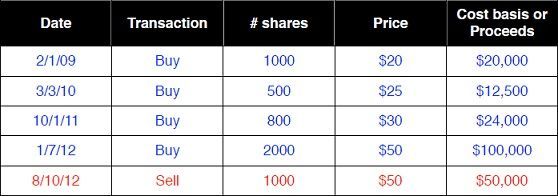Article
Big Brother is Watching: Know Your Cost Basis
Author(s):
There were new tax rules this year to follow for taxable non-retirement accounts. Getting it right can save you thousands of dollars in taxes.
It’s April again … spring arrives, baseball season begins, and my wallet feels lighter after paying my “fair share” of taxes. There was some consolation this year. You got two extra days to file your income tax return since April 15 fell on a Sunday. You also got a reprieve on Monday, April 16 because it was Emancipation Day in D.C. How ironic is that?
Many of you invest in taxable (nonretirement) accounts in addition to investing in your 401(k)s or IRAs. For those accounts there are new tax rules this year that you have to follow. These rules pertain to how you report gains and losses. Getting this right can potentially save you thousands of dollars in taxes so it’s worth spending some time discussing this.
The new IRS reporting rules
Before 2011 if you sold investments in a taxable account, you’d get a 1099 form from your brokerage firm listing the net proceeds you received from the sale of the investment — whether a mutual fund or individual stock. Sales were directly reported to the IRS, but what you bought these investments for was not reported. It was up to you to determine your gains and losses and report these gains or losses on Schedule D of your income tax return.
The game has changed. Now all buy trades are reported directly to the IRS along with sell trades. This means you better be sure you’re matching up your sell transactions with your buy transactions and reporting your gain/losses accurately. Otherwise get ready for some potentially nasty IRS letters.
Like any tax law this gets sticky. The problem is that if you bought stocks or mutual funds before 2011, those transactions are still not reported to the IRS. It’s only the buy trades after 1/1/2011 (for stocks) and buy trades after 1/1/2012 (for mutual funds) that are reported.
So your new 1099 forms from your brokerage accounts will divide the investments into “non-covered” investments — investments whose buy transactions were not reported to the IRS — and “covered” investments — investments whose buy transactions are reported to the IRS.
Now you’ve got a big headache. Suppose you bought some shares of a stock or fund in 2005, 2006, 2009, 2011 and 2012 and you sell a portion of those shares. The proceeds from the sale will be reported to the IRS, but you have to determine whether the shares came from the noncovered shares or the covered shares. And don’t forget reinvested dividends. Those are included in these calculations.
Take advantage of cost basis methods
That gets to the concept of cost basis, which is simply the net investment you made into a particular stock or fund. Suppose you bought 100 shares of stock for $50 per share and paid a $25 trading commission. Your cost basis is 100 x $50 = $5,000 + $25 = $5,025. If you later sell all of these shares for $100, again paying a $25 commission, your proceeds are 100 x $100 = $10,000 — $25 = $9,975. Your gain from this sale is $9,975 — $5,025 = $4,950.
Easy right? I wish.
The complexity rapidly increases when you’ve got multiple transactions in a taxable account over time. Let’s look at an example. Suppose you made the following transactions in a mutual fund over the past few years:

In this example the last two transactions would be reported directly to the IRS but the first three would not since they are non-covered transactions. What gain do you have to report on Schedule D of your income tax return?
That depends on what method of cost basis reporting you’re going to do. Next time I’ll show you how changing your cost basis method can help lower your tax bill.




